한식 읽기 좋은 날
Vol 50. Korean Food, The Culture Blooms
Pyeongchang, the Place Blessed with Beautiful Nature
Korean Food Tour
When planning a trip to Pyeongchang, it is easy to face a dilemma. It isn’t because it is a place with a few places to visit. There are many ranches that boast of wide grasslands due to Daegwallyeong Pass, and there is also a fir forest with many trails where you can walk and find contentment. I want to stay in a well-kept garden, and drive along the river.
Pyeongchang is a natural beauty in itself, and this is why I cannot help but fall in love with the place.
Article. Lee Jongcheol
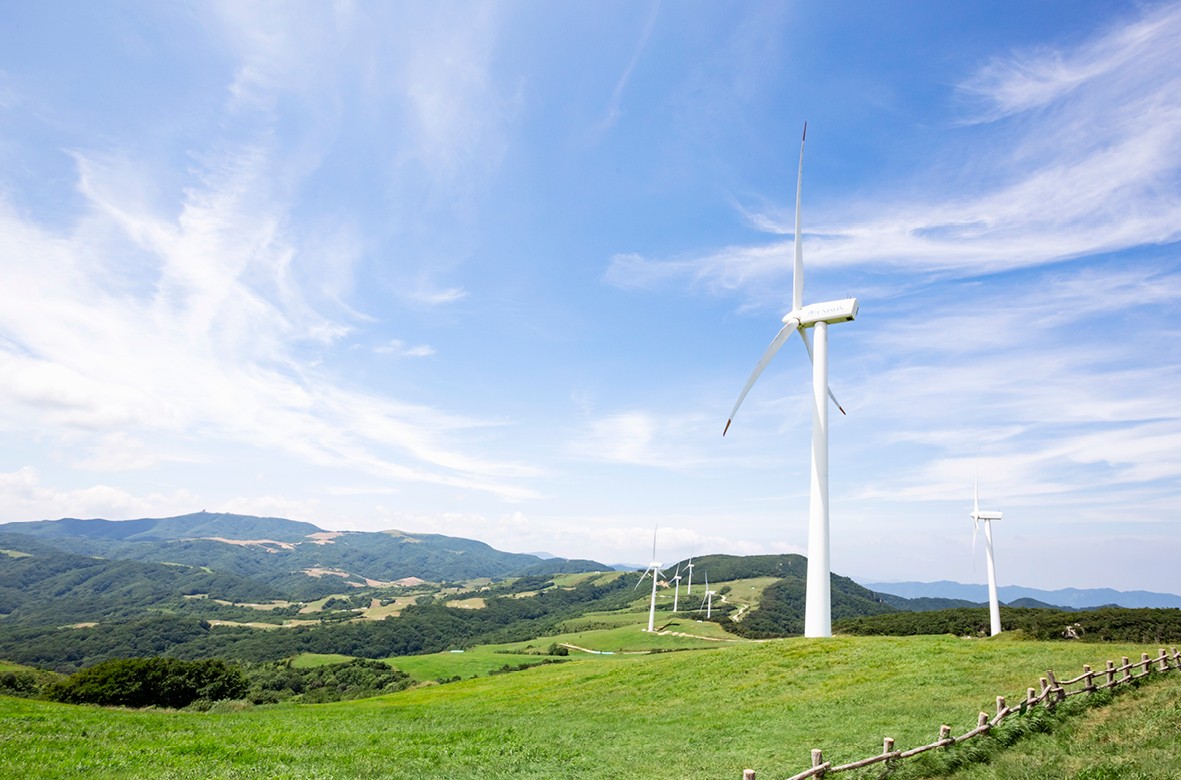
Remembering Pyeongchang from Taste
The area around Bongpyeong-myeon, Pyeongchang, is the place where scholars in the olden days enjoyed the arts, and the contemporary literature represented by <When Buckwheat Flowers Bloom> took root. The seeds of culture are still sown by those who love art, and others bloom fragrant flowers in an effort to carry on the tradition. In Bongpyeong, you must try buckwheat first. Buckwheat dishes can be found anywhere in the country, but the unique flavor of buckwheat is found most deeply in Bongpyeong, the hometown of buckwheat. The representative menus are memilmakguksu(buckwheat noodles) with high buckwheat content and soft noodles, and memiljeonbyeong(buckwheat crepe) that is light and mild. Buckwheat restaurants are scattered all over Bongpyeong, including Lee Hyo-seok Culture Village. Moreover, there are many freshwater fish farms in Pyeongchang, where there are many clean valleys with first-class water. The main fish species are trout and sturgeon. The dishes with both fish are delicacies that are difficult to find in the city, and can be enjoyed as hoe(sliced raw fish dish), maeuntang(spicy stew), gui(grilled dish), and twigim(deep-fried dish). Songeomaeuntang(spicy trout stew), in particular, makes your mouth water with its unique trout flavor rich in fat that mixes well with the spicy broth. In Pyeongchang, there is a place where you can experience traditional food culture. It is Jeonggangwon, a place where you can taste proper dishes made with Korean ingredients, and experience various traditional foods. Established by Jo Junggang, a descendant of Jungbong Jo Heon and a Korean food expert, it is equipped with educational facilities and accommodation in hanok. Organic vegetables that are used for dishes are grown in the spacious yard, and hundreds of jangdoks(crocks) filled with soy sauce are placed, creating a wonderful scenery. In the Food Museum, seokbingo(stone ice storage), which contains the wisdom of our ancestors, is reproduced, and the relics that were used to make food are also on display.
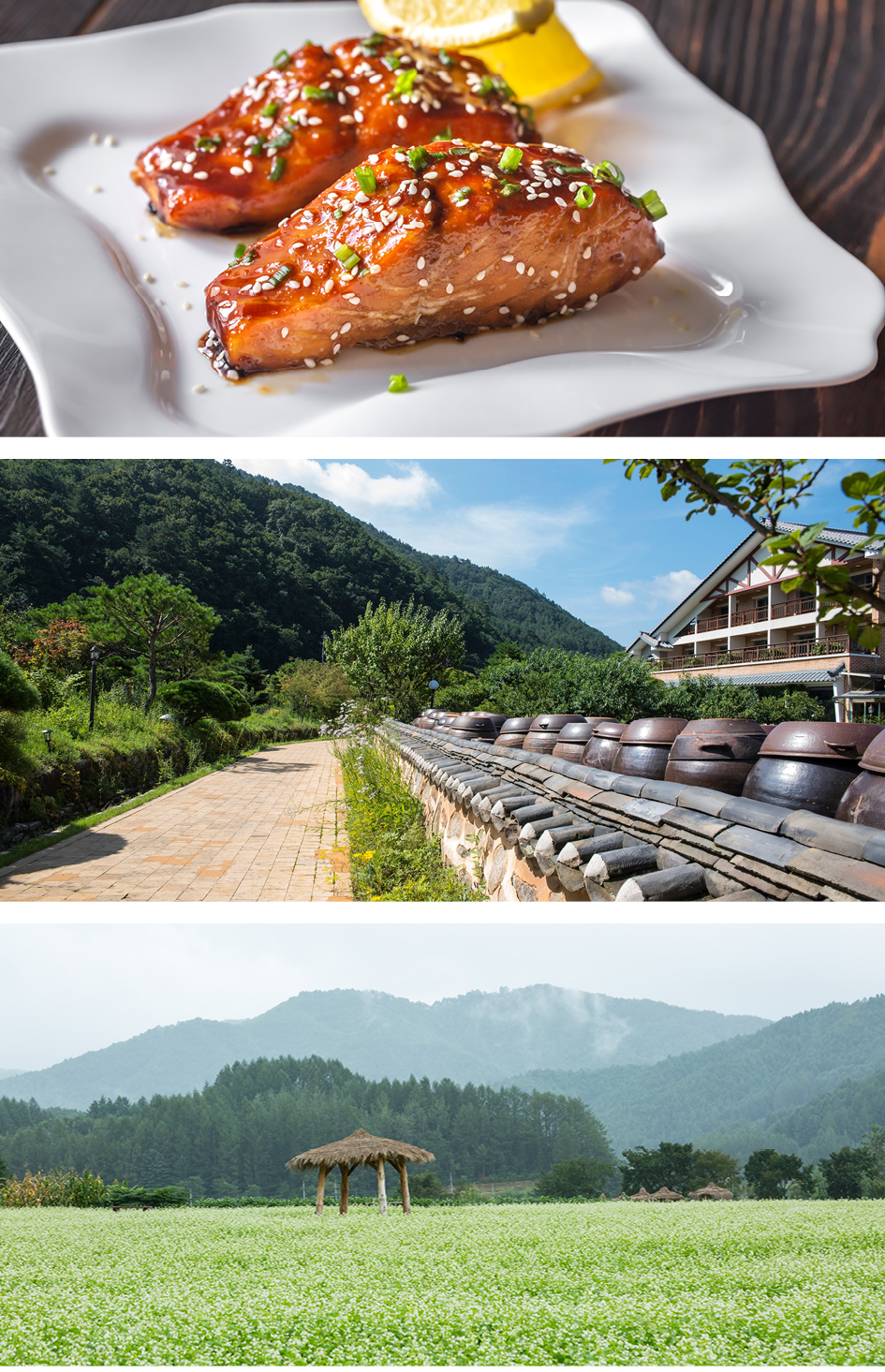
Following the Footsteps of Literature To the Place Filled with Lee Hyo-seok
“The hillside is all buckwheat fields, so the flowers that have started to bloom look like salt, filling every inch in the light of the moon.” Looking back on the memory of reading Lee Hyo-seok's <When Buckwheat Flowers Bloom>, there are several impressive phrases, and this beautiful sentence that is structured like a poetry verse attracts many people to Pyeongchang. Bongpyeong-myeon, Pyeongchang, is the stage of <When Buckwheat Flowers Bloom>, which is regarded as the best of our contemporary literature, and is where Lee Hyo-seok was born and raised. Following in his footsteps, the Lee Hyo-seok Culture Village was first established in 1990, and organized many sites, such as Culture Forest, Cultural Hall, the Site of the Birthplace of Lee Hyo-seok, and Watermill, where visitors can ruminate on him. Though there are no buckwheat flowers, you will reach the watermill where Mr. Heo and Miss Seong share an intimate time, and the birthplace site of Lee Hyo-seok that was reproduced while walking around. You can stroll around the place while recalling the characters in the novel, and explore the world of Lee Hyo-seok thoroughly by visiting the Culture Hall.
I visited another place after I heard where the studios of artists are gathered. Mooee Arts Center is where works of art, such as sculptures, paintings, and calligraphy, are displayed after Mooee Elementary School was closed and transformed into an art center. When you pass the entrance, you will be greeted with various sculptures by Oh Sangwook on a large field where children would have played. It takes a long time just to look around the outdoor sculpture park, with a lady posing beautifully and a family of cats with a funny expression while holding a kitten. As you enter the building, the scenery of buckwheat flowers you have longed to see unfolds in numerous paintings. Looking at the paintings of Western-style artist Jung Yeonseo in the classroom, the regret of not seeing the buckwheat fields in person disappears. It is interesting to see the works of Lee Cheonseop, a calligrapher, and Kwon Soonbeom, a ceramic artist, on both sides of the small classroom and hallway.
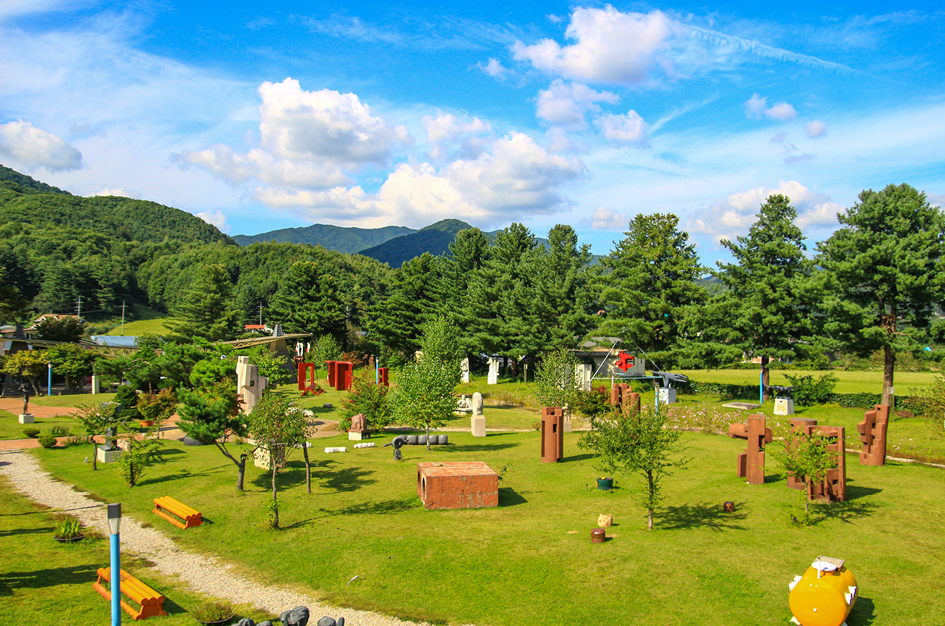
Blue Sky and Cool Breeze,
Nature Infused with Spring Scenery
Driving on Daegwallyeongmaru-gil, a wind turbine rotating in the blue sky caught my eye. Looking at it from afar, I couldn’t fathom its majesty. Located in the Taebaek Mountains with elevations of 1,000 meters or more, Pyeongchang is often referred to as the “Korean Alps.” You can only see how wonderful the scenery of the Korean Alps is when you climb it yourself. When I opened the map, I saw that there are six ranches in Daegwallyeong-myeon alone. I thought that it would be good to go anywhere, but on the excuse that the weather was too good, I climbed to the top of the mountain, and headed to Samyang Ranch, where I can see Gangneung at a glance. After taking the shuttle bus from the entrance and climbing for about 20 minutes, an amazing world unfolds before my eyes. The wind power generators, which are said to be responsible for 60% of the electricity used by Gangwon-do residents, made a roaring noise, and rotated non-stop. The whole world was green under my feet.
Feeling the beauty of lush green waves lulling in the cool wind and looking at people constantly taking selfies, it was clear that everyone on the field shared the same thought. When I went up the observatory to take a breather, Donghae(the East Sea) and Gangneung spread out in an unobstructed view.
Now that I truly felt the abundance of the fields, and it was time to enjoy the mood of the mountains. Odaesan, which is beautiful in all four seasons, is also a pride of Pyeongchang. First, I decided to walk through the fir forest trail. As you move toward the Woljeongsa Temple, you will come across a densely green fir forest. This place, which has provided a cozy forest trail for a long time, is regarded as one of the three major fir forests in Korea, with the reputation of being the “Thousand-year Forest.” It became more famous as it became known as the setting for the popular drama <Goblin: The Lonely and Great God> that aired a few years back. The place where the two main characters confirmed their love was right here, the Thousand-year Forest. As the main character of the drama had walked silently for a long time, you will feel refreshed by the subtle scent of fir trees while walking quietly.
Instead of hiking, I found another fir forest trail, and headed to the Pangadari Mineral Spring located at the foot of Gyebangsan Mountain. About 300 meters from the ticket office to the mineral spring is a fir forest trail. Compared to the Woljeongsa forest trail, it feels smaller and more charming. Perhaps because it is well preserved in its natural state, a squirrel and a chipmunk came close to my feet. It’s been a while since I heard birds chirping, so it felt like I was refreshed from inside out. Near the Pangadari Mineral Spring, there is a forest experience learning center with a forest classroom, a wildflower garden, and a walking trail.
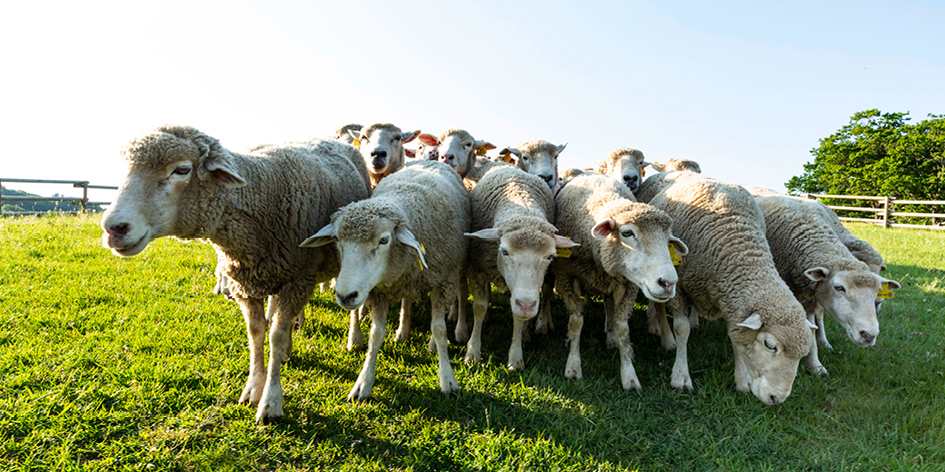
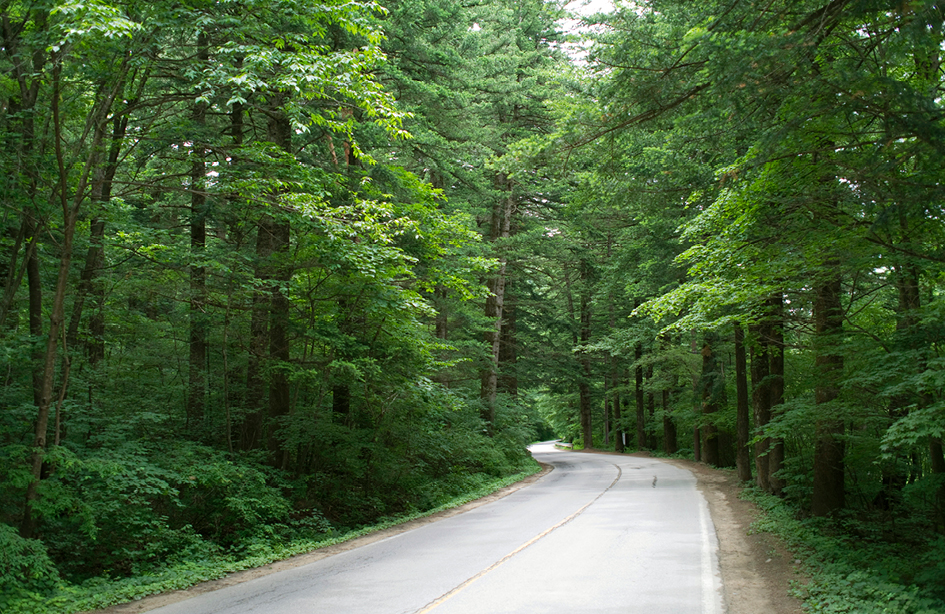
Falling in Love with the Quaint Beauty of
A Lush Forest and the Fragrance of Grass
While walking along the mountain, I made eye contact with squirrels and chipmunks, enjoyed the sound of the birdsong, and also met a cute baby bird waiting for its mother. This is the place where the expression of a blessed nature fits perfectly. Having seen such a moving interior, I wanted to examine the exterior carefully as well. It is a place known for its beautiful mountains, so I could get my money’s worth anywhere, but I decided to go to a place near a river.
If you go down a little further to the south to the point where it meets Yeongwol, you will reach the Donggang River. Donggang River is a place for memories that I visited for rafting activities when I was young. It has been a long time since I’ve visited so I wondered whether it would be the same, and I was reminded of old memories one by one. I remembered that there were many things to enjoy besides rafting nearby, so I opened the map and found Eoreumchi Village, Baengnyong Cave, Chiljoknyeong Observatory, and the Pyeongchang Donggang Fresh Fish Ecology Center. I decided to go for a drive because I wanted to see the scenery of the river and the mountains. I drove on the road running right next to the Donggang River, and there was a small village nestled in the middle of the mountain. However, it was a pity that the Donggang River was a little different from what I remembered. Since it didn’t rain much, it was a contrast to the river I expected, where a large stream of water flowed down. I hoped for rain for the river, the mountain, and the people. When I went near the river, the water was still clear, which was comforting. Pyeongchang is a place boasting of the feast of green that reaches anywhere your feet take you with a harmony of rivers, mountains, fields, and people. I vowed to visit this place again when I get tired of the noise and the murky air of the city, and miss this abundant and clean nature.
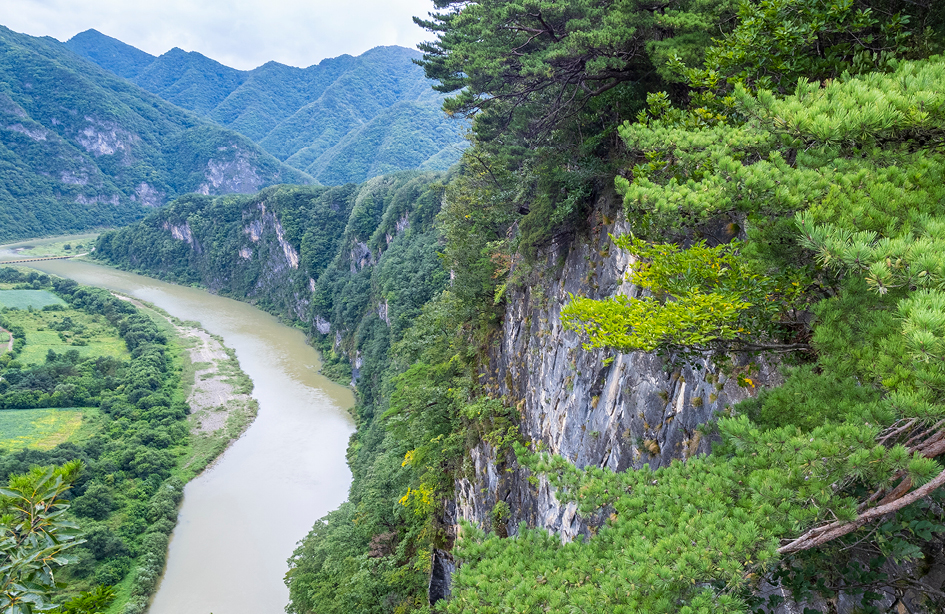

 한국어
한국어
 English
English






